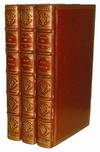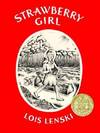New York: Charles Scribner's Sons, 1933. AP2 - A first edition ("A" present on the copyright page) hardcover book in good condition that has some bumped corners and light edgewear, lightly bowed, light wrinkling on the spine, some scattered scuffing and chipping, light smudge and rubbing on the page edges, top to bottom tear on the hinge with net showing on the back endpaper, some scattered crease, light tanning and shelf wear with no dust jacket. A Philo Vance Story. Although not marked in any way, this copy comes from the personal collection of Otto Penzler, legendary editor and founder of the Mysterious Press, an award-winning icon in the genre. 7.5"x5.25", 307 pages. Satisfaction Guaranteed. S.S. Van Dine is the pseudonym used by American art critic Willard Huntington Wright when he wrote detective novels. Wright was an important figure in avant-garde cultural circles in pre-World War I New York, and under the pseudonym (which he originally used to conceal his identity) he created the immensely popular fictional detective Philo Vance, a sleuth and aesthete who first appeared in books in the 1920s, then in films and on the radio. At age 21, Wright began his professional writing career as literary editor of the Los Angeles Times, where - describing himself as "'Esthetic expert and psychological shark" - he was known for his scathing book reviews and irreverent opinions. He was particularly caustic about romance and detective fiction. His friend and mentor H.L. Mencken was an early inspiration. Other important literary influences included Oscar Wilde and Ambrose Bierce. Wright was an advocate of the naturalism of Theodore Dreiser, and Wright's own novel, The Man of Promise (1916), was written in a similar style. In 1909, Wright wrote a perceptive profile of Edgar Allan Poe for the Los Angeles Times. Wright moved to New York City in 1911. He published realist fiction as editor of the New York literary magazine The Smart Set, from 1912 to 1914, a job he attained with Mencken's help. He was fired from that position when the magazine's conservative owner felt that Wright was intentionally provoking their middle-class readership with his interest in unconventional and often sexually explicit fiction. In his two-year tenure, Wright published short stories by Gabriele D'Annunzio, Floyd Dell, Ford Madox Ford, D.H. Lawrence, and George Moore; a play by Joseph Conrad; and poems by Ezra Pound and William Butler Yeats. In 1913, he visited Paris and Munich, seeing Impressionist and Synchromist works of art. He wrote an article about the art, Impressionism to Synchromism, December 1913, published in New York magazine, which brought the abstract art to public attention in the US. Wright's energies were devoted to numerous projects, reflecting his wide range of interests. His book What Nietzsche Taught appeared in 1915. An attempt to popularize the German philosopher with skeptical American audiences, it described and commented on all of Nietzsche's books and provided quotations from each work. Wright continued to write short stories in this period; in 2012 Brooks Hefner revealed heretofore unknown short stories that featured an intellectual criminal, written by Wright under a pseudonym several years before his adoption of the Van Dine pseudonym. Wright was, however, most respected in intellectual circles for his writing about art. In Modern Painting: Its Tendency and Meaning (secretly co-authored in 1915 with his brother Stanton), he surveyed the important art movements of the last hundred years from Manet to Cubism, praised the largely unknown work of Cézanne, and predicted a coming era in which an art of color abstraction would replace realism. Admired by people like Alfred Stieglitz and Georgia O'Keeffe, Wright became under his brother's tutelage one of the most progressive (and belligerently opinionated) art critics of the time and helped to organize several shows, including the "Forum Exhibition of Modern American Painters", that brought the most advanced new painters to the attention of audiences on both coasts. He also published a work of aesthetic philosophy, The Creative Will (1916), that O'Keeffe and William Faulkner both regarded as a meaningful influence on their thinking about artistic identity. In 1917, Wright published Misinforming a Nation, in which he mounted a blistering attack on alleged inaccuracies and British biases in the Encyclopædia Britannica Eleventh Edition. A Germanophile, Wright did not support America's decision to join the Allied cause in World War I, and he was blackballed from journalism for more than two years after an overzealous secretary (erroneously) accused him of spying for Germany, an episode that became a much-publicized scandal in New York in November 1917. Though cleared, his favourable view of Prussian militarism cost him his friendships with Mencken and Dreiser. In 1929, at the height of his fame as 'Philo Vance', he was appointed Police Commissioner of Bradley Beach, New Jersey. After suffering a nervous breakdown and the beginning of a long-term dependence on drugs, Wright retreated to California, where he attempted to make a living as a newspaper columnist in San Francisco. Contrary to what is stated in some sources, Wright did write a biography of the poet Richard Hovey and it was announced for publication in Spring 1914. In 1929, Wright stated that "It is true that at one time I was working on a book relating to Richard Hovey and his friends but Mrs Hovey died before the book went to press, and it has never been published"; that remains the case. . First Edition. Hardcover. Good/No Jacket. 12mo - over 6¾" - 7¾" tall.

(US)

